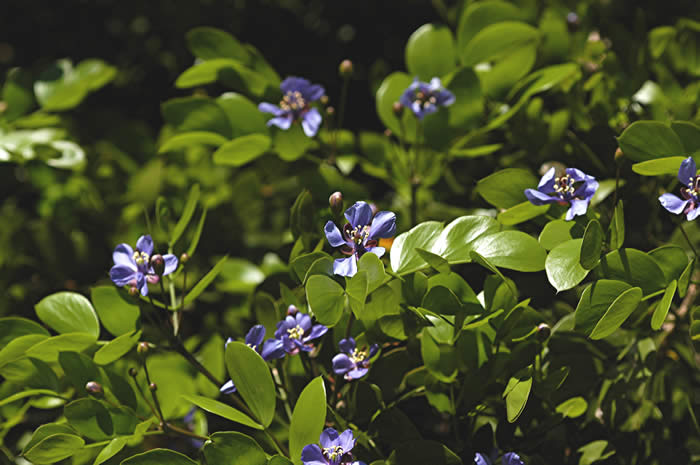Upper Keys and Lignumvitae Key
Self-guided Tour by David L. Lysinger
Elliott Key (Biscayne National Park)
Elliott Key can be an exciting place to look for butterflies, but it’s not an easy place to negotiate. During May and June, when the Schaus’ Swallowtail, Papilo aristodemis, our federally endangered butterfly, is dependably aloft, hordes of mosquitoes can be aloft as well. Elliott Key is a long thin island with a central trail traversing it, and lots of walking is required to cover it well. The Schaus’ can be seen patrolling the trail, but also look for Giant Swallowtail, Papilo cresphontes, which is similar. Near the center of the island, around the obvious crossroads, is a small local population of Polydamas Swallowtail, Battus polydamas, which is drawn to the endangered Marsh’s Dutchman’s-pipe, Aristolochia pentandra, its larval plant. Florida Purplewing, Eunica tatila, and Large Orange Sulphur, Phoebis agarithe, can also be seen along the central trail.
Getting to Elliot Key takes about a 20 minute boat ride from the mainland. Check the Biscayne National Park website for shuttle information. There is an interpretive center, camping, picnic tables and grills, restrooms, showers and fresh water.
Biscayne National Park
9700 SW 328th Street
Homestead, FL 33033-5634
Phone: 305-230-7275
North Key Largo
The best place to begin a butterflying tour of North Key Largo is at Dagny Johnson Key Largo Hammock Botanical State Park. This is one place on North Key Largo where you don’t need a back-country permit to enter a wilderness area. Park in front of, and pass through, the large arch (on the east side of C.R. 905), which is about a quarter of a mile north the junction of U.S. 1 and C.R. 905. Look for Schaus’ Swallowtail, Giant Swallowtail, Large Orange Sulphur, and Caribbean rarities. Be keen; about 65 species of butterflies have been recorded from Key Largo, a smorgasbord!
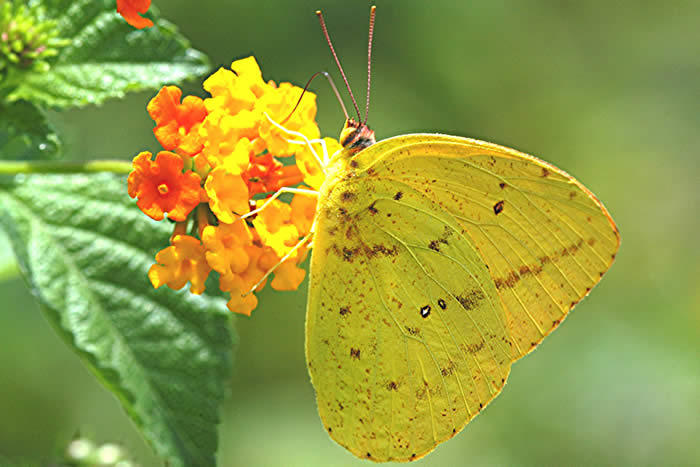
North of C.R. 904A on North Key Largo, also part of “Dagny Johnson,” is another good place to look for Schaus’ Swallowtail and Florida Purplewing. This area is restricted to those with backcountry permits, which can be obtained at John Pennekamp Coral Reef State Park, located at mile marker 102.5 north of Key Largo.
Dagny Johnson Key Largo Hammock Botanical State Park
P.O. Box 487
Key Largo, Florida 33037
Phone: 305-451-1202
John Pennekamp Coral Reef State Park
Mile Marker 102.5
P.O. Box 487
Key Largo, Florida 33037
Phone: 305-451-1202
Crocodile Lake National Wildlife Refuge
There is a butterfly garden near the entrance to the headquarters for this refuge. Anything can appear here, but be watchful for Silver-banded Hairstreak, Chlorostrymon simaethis, at the Balloon Vine, Cardiospermum corindum, on the arbor. Julia, Dryas julia, several species of large sulphur, and many species of skipper are all drawn to the large variety of nectar producing plants in this garden. The garden is adjacent to a large tract of tropical hardwood hammock that contains the larval host plants for most of the butterflies you see here, giving the Crocodile Lake Community Butterfly Garden a bona fide one-two punch.
No amenities.
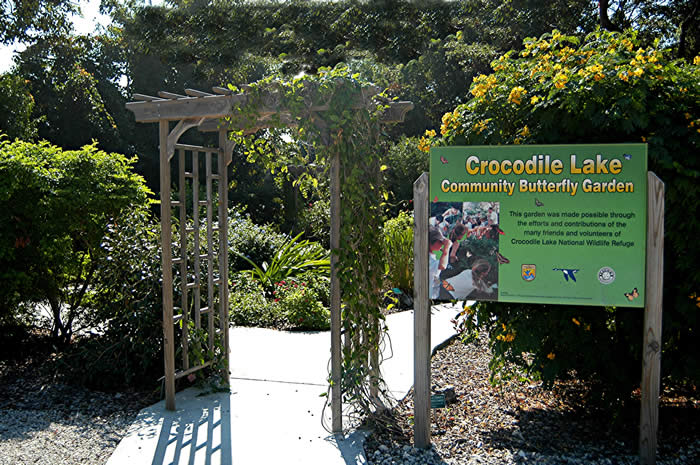
Crocodile Lake National Wildlife Refuge
P.O. Box 370
Key Largo, FL 33037
Phone: 305-451-4223
The Crocodile Lake Community Butterfly Garden is on the west side of C.R. 905 about 2 miles north of the intersection of US 1 on CR 905.
Old Settlers Park, Key Largo
Just south of Mile Marker 92 on the ocean side of U.S. 1 is Old Settlers Park. This small park runs from the Highway to the ocean and is jam-packed with plants that are highly attractive to butterflies. Look on the firebush and senna patches for large sulphurs, the areas near the coast for Ceraunus Blue, Hemiargus ceraunus, and along the hedge-rows for Cassius Blue, Leptoided cassius.
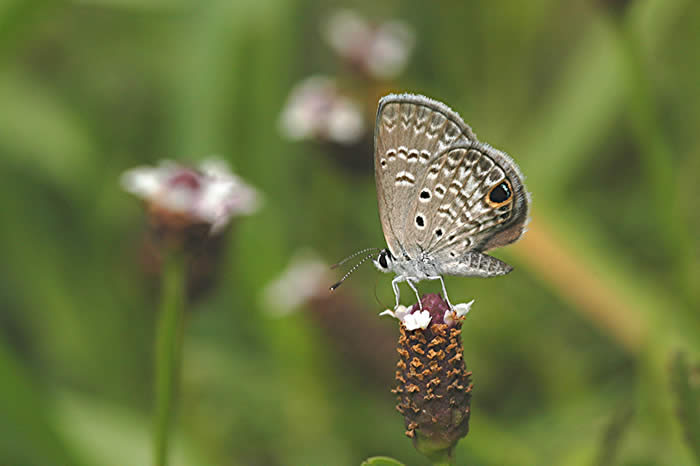
The main draw to butterflyers, however, is the large Lignumvitae tree, Guiacum sanctum, near the entrance and the Lyside Sulphurs, Kricogonia lyside, that sometimes swirl around it during the warmer months, starting about June, at least this year (2005). This medium size pale greenish-yellow butterfly can be absent for years at a time, so see it while you can.
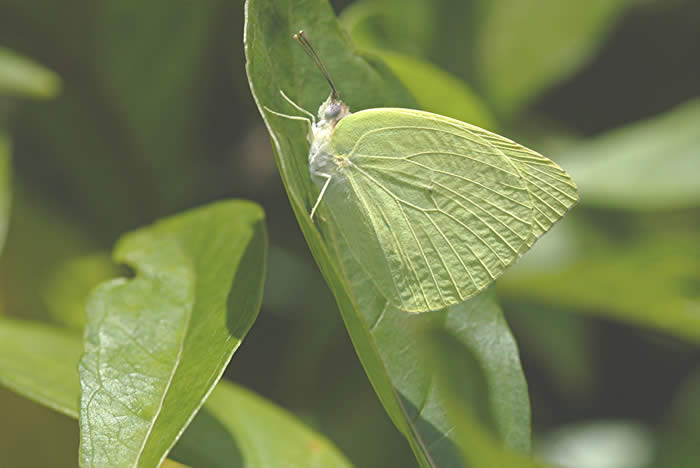
The park offers a covered area with picnic tables and a small “energy release” play area for toddlers, but no other amenities.
Lignumvitae Key Botanical State Park
Your butterfly species count will probably be less than a dozen on this historical Key, but, with good luck, that will be offset by point-blank looks at one of North America’s most attractive and rarest butterflies … the Florida Purplewing, which incidentally is found only in the tropical hardwood hammock portion of this 280 acre island. This charmer is aloft year-round, but during cool spells it can be a late riser. Other Lignumvitae Key butterflies can be Julia, Mangrove Buckeye, Junonia evarete, Zebra, Heliconius charitonius, Hammock Skipper, Polygonus leo, and in the salt marsh areas, Eastern Pygmy-Blue, Brephidium isophthalma. The Miami Blue, Hemiargus thomasi bethunebakeri, was a front yard resident here as late as 1980.
Being home to several National Champion trees in a rare virgin forest, and the presence of the historical 1919 Matheson House make this Key well worth a visit even if you’re not interested in butterflies.
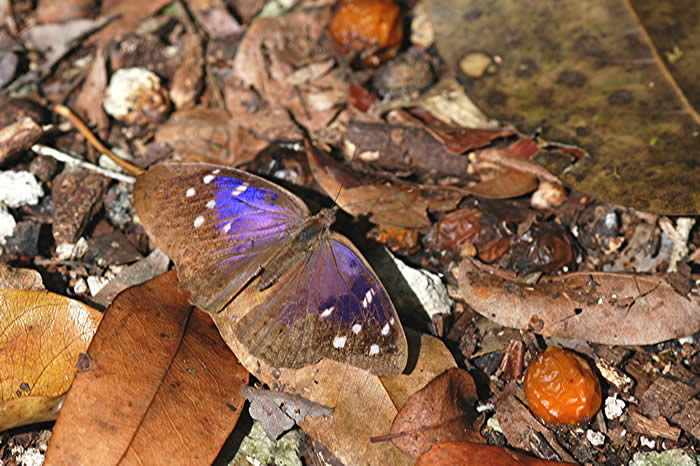
Note: Lignumvitae Key is CLOSED Tuesday through Friday as of this writing.
Lignumvitae Key Botanical State Park
PO Box 1052
Islamorada, Florida 33036
Phone: 305-664-2540
Access is by private boat or ferry trips can be arranged at Robbie’s Marina If you plan to use Robbie’s, be sure to call ahead to ensure there is a boat and Captain available.
Mile Marker 78.5
1-877-664-8498
